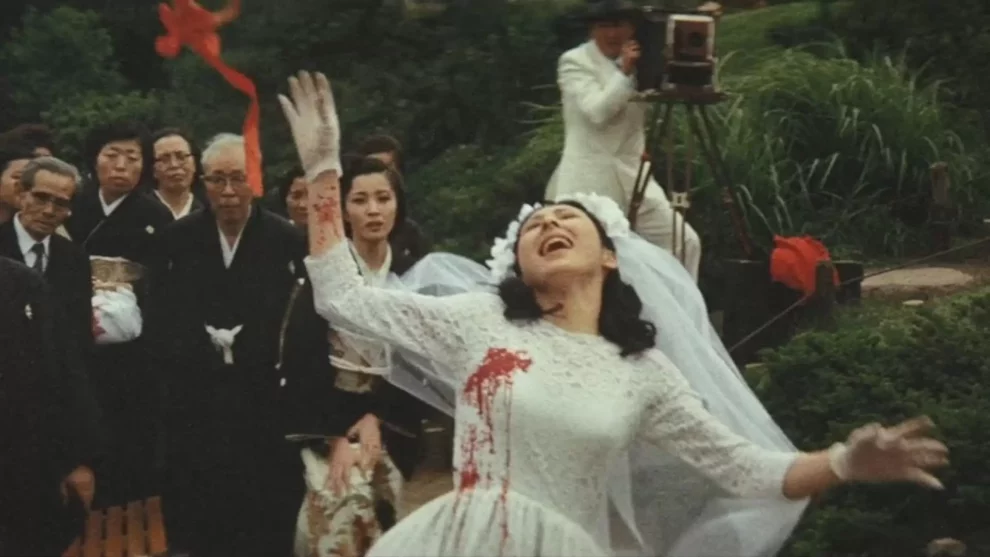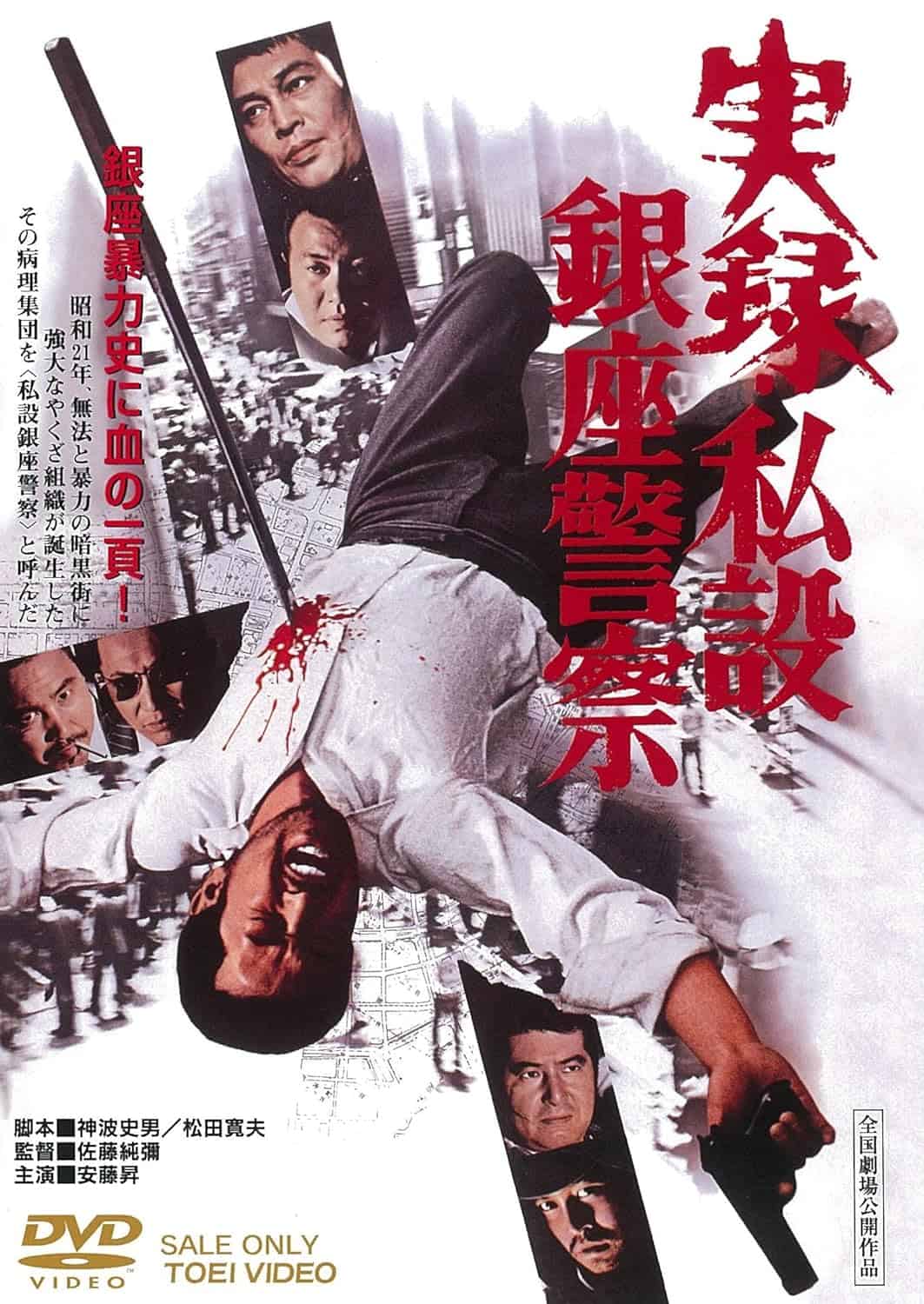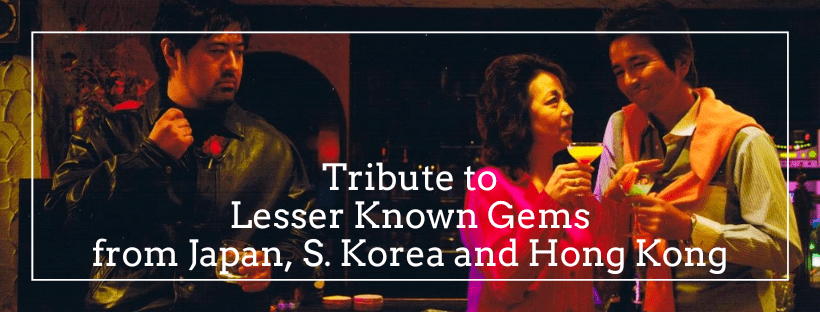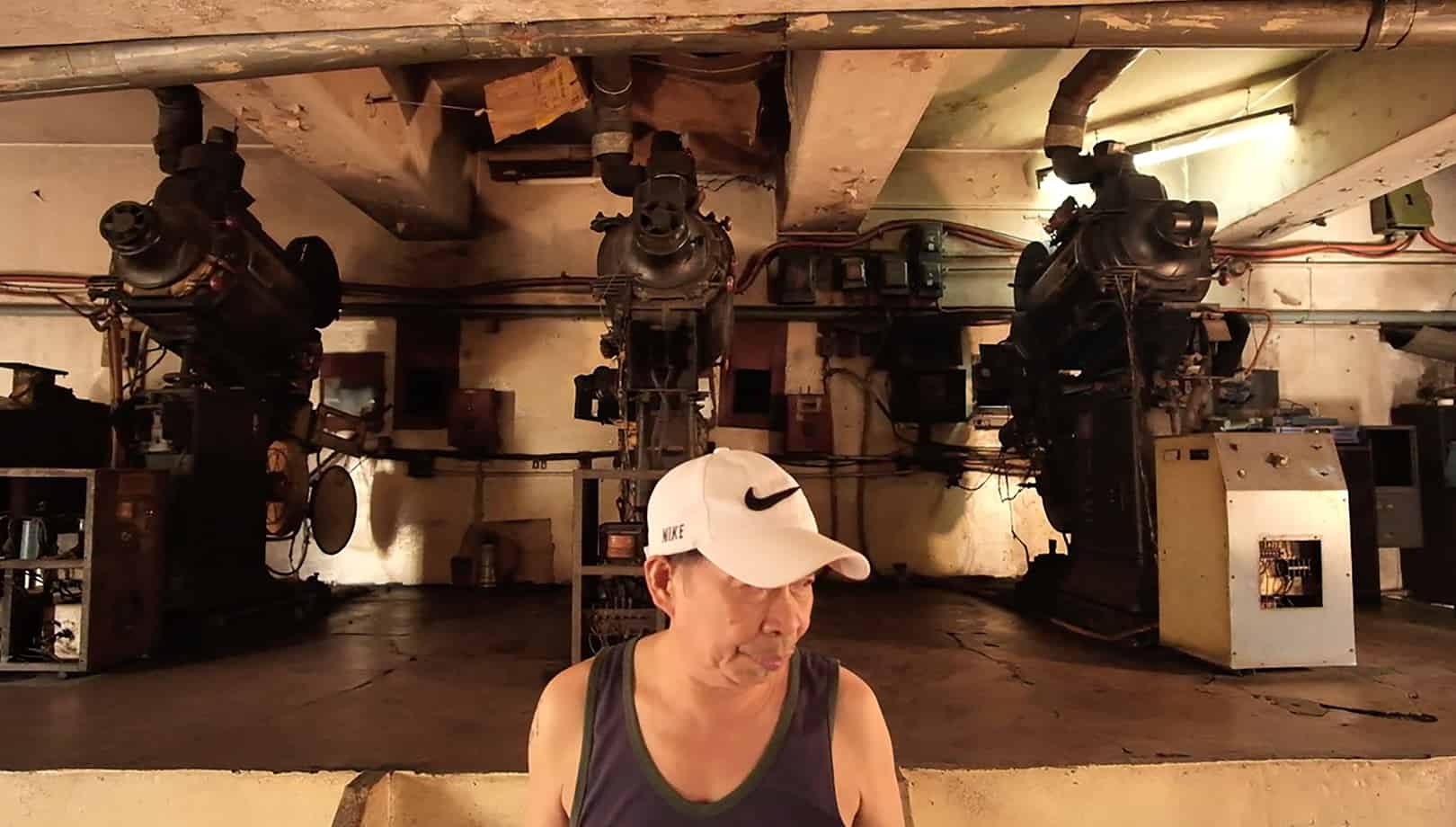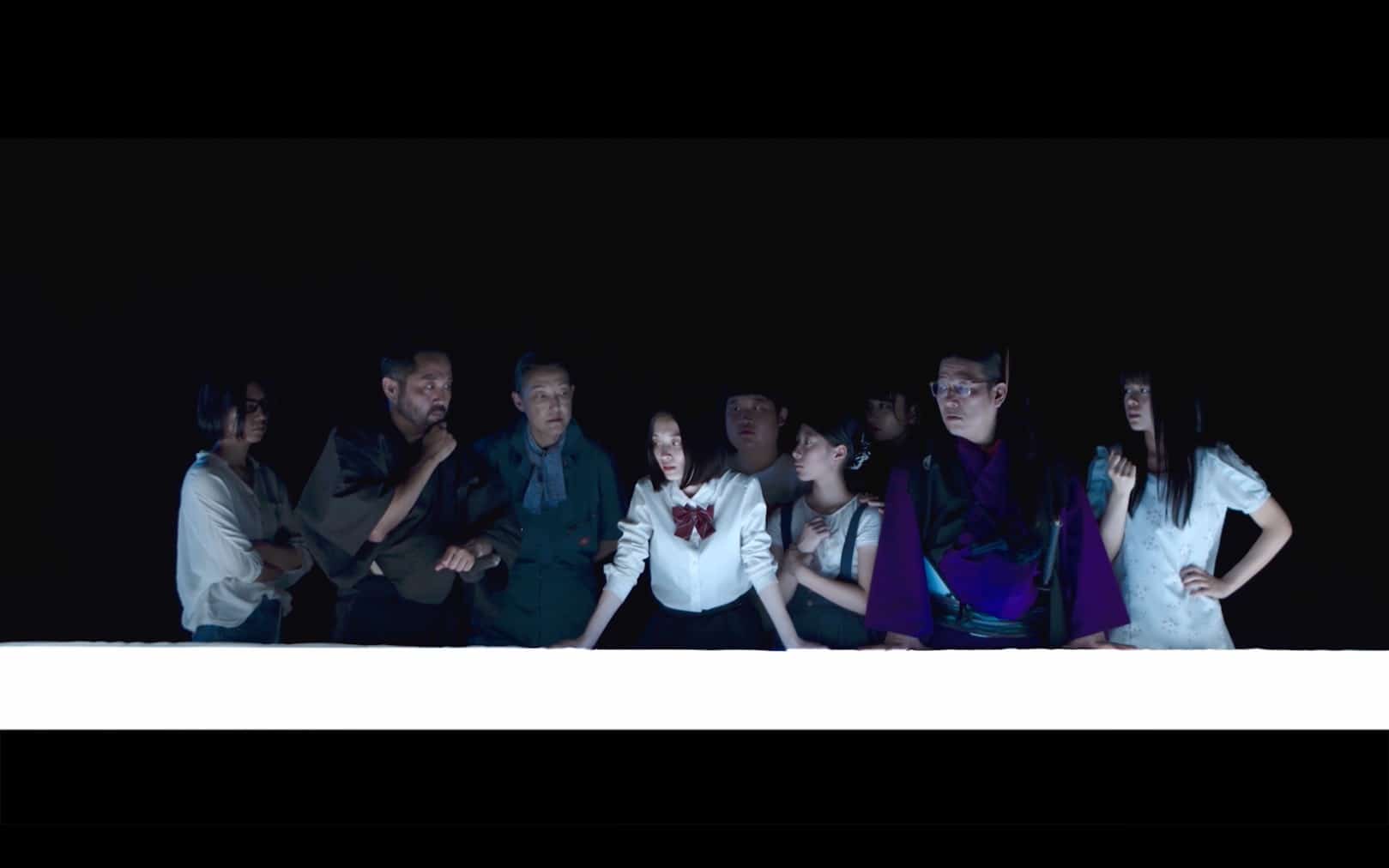The Jitsuroku eiga, as established essentially by Kinji Fukasaku's “Yakuza Papers”, is one of the most interesting trends in Japanese cinema, with the combination of realism regarding the lives of the yakuza after the war and the intense violence and sex creating a truly explosive combination that remains entertaining until this day. “A True Story of the Private Ginza Police”, which was released in the same year as “Battles Without Honour and Humanity” is a prominent sample of the category, as much as of Junya Sato's style.
Buy This Title
on Amazon by clicking on the image below
After a series of some footage stills that point towards a documentary, the film actually begins with a scene that sets up the tone of the whole thing quite eloquently. Watarai, a former soldier, returns to Tokyo in 1946, where he finds his wife having sex with a black GI, while a black baby is lying next to them. Mad with rage, he throws the baby over the balcony and beats his wife to death. Next up is Iketani, who is beaten for stealing, followed by Masaru, who attacks a prostitute who rejects him for the American GIs, only to be beaten himself by her “friends”. Iwashita, a hopeless gambler who always loses and uses a pistol he has managed to keep from the war in order to rob shops and get more money to gamble, dices with Usami, a scar-faced “patron” of gambling. The five of them, for no apparent reason, probably due to their common past as soldiers of the losing side, bond one night in attacking the Korean gang that beat up Iketani. Soon after that, they name themselves the Ginza Police, and under the leadership of Usami, proceed on taking over the area. Their alliance, however, does not last for long.
From the get go, Junya Sato creates a hellish setting of chaos that is inhabited by people who linger between being losers and utter animals. The comment about the dire circumstances of the country after the war is quite evident here, as much as what the war did to people, with the fact that all the protagonists are former soldiers, each with their own blight but definitely all destroyed mentally, highlighting this aspect quite eloquently. At the same time, as we see them exploiting everyone who is weaker than them, and indulging in gambling, drugs, stealing, raping and maiming, a resulting comment about human nature also emerges. This finds its apogee in the final orgy scene, where the whole narrative essentially finds a worthy ending, in an appallingly chaotic fashion, where naked men and women are rolling around scores of money, with Sato portraying them like pigs in the mud.
Apart from context though, the movie thrives on its directorial approach, with Junya Sato creating a spectacle of frenetic energy, with the action, the violence, the nudity and the gore splashing on the screen non-stop, from the beginning until the end of the 94 minutes of its duration. One can only admire how much the actors, both protagonists and supernumeraries, are running around beating and killing each other, with their speed essentially dictating the pace of the movie. In that fashion, the whole kinetic energy is also dictated by the excellent editing by Yoshiki Nagasawa, whose cuts set up a tone to match the action and the events in the most fitting fashion. The same could be said about the frantic jazz score by Masanobu Higurashi, but the result is actually annoying on occasion, considering its volume and the fact that it is rather monotonous.
Of course, all this speed also causes some issues, particularly with the narrative. Although the passing of the years is indicated by letters on screen, the way the story moves forward and the transformations the characters undergo do not make that much sense. Additionally, considering how fast the events go from one to the other, there is not much change to empathize with the characters, which essentially look much like each other after a point. This, however, has an exception, with the way Watarai becomes a drug addict, and the role he plays in the story as one that stands out, particularly in the final scene, being one of the best aspects of the narrative. Tsunehiko Watase gives the most memorable performance in the movie in the role, as the most dramatic figure of them all, particularly because he seemed to be the strongest.
Evidently not for the faint of heart, “A True Story of the Private Ginza Police” is a film addressed to fans of exploitation cinema, still packing, however, enough context to be something much more than just fanservice and definitely a title that deserves the term cult.


